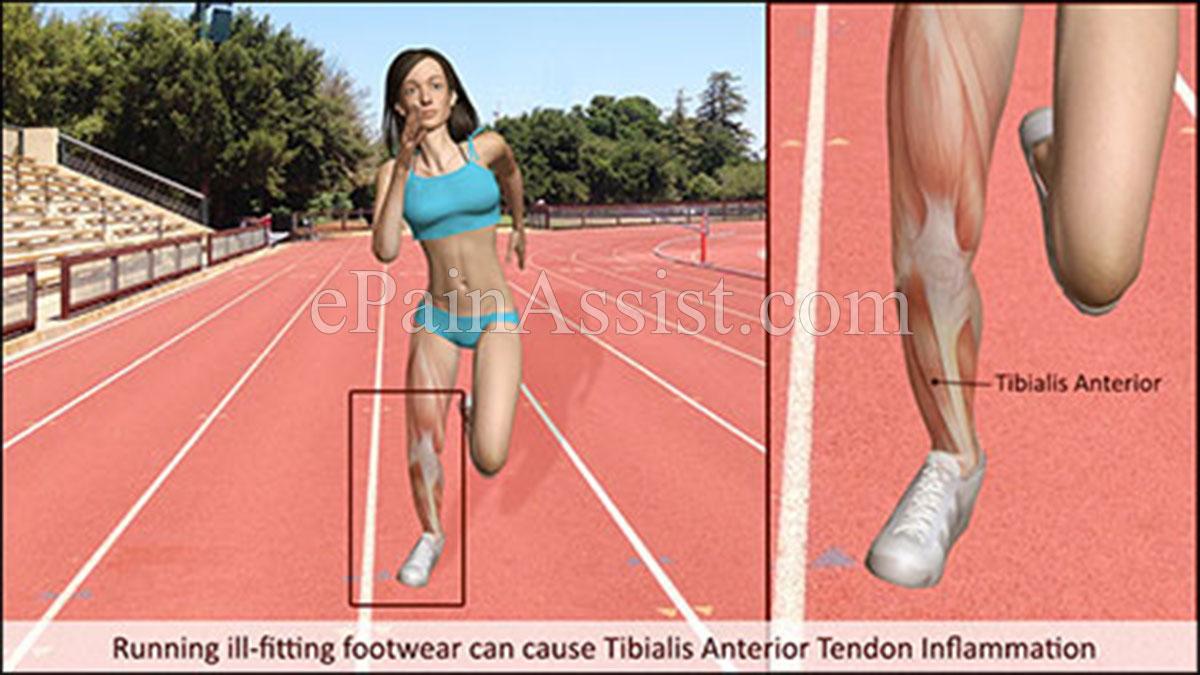The large muscle that travels down the external area of the shin to the ankle is known as the tibialis anterior muscle. This muscle helps in flexing the foot up and down. This movement is required in walking, kicking a soccer ball, ballet moves etc. The muscle and the tendon are enclosed in a protective sheath. Inflammation of this sheath or the tendon causes pain and weakness in the ankle. Inflammation is usually the result of overuse, such as can be seen due to poor biomechanics when running in ill-fitting footwear. Individuals involved in sports such as running, tennis, basketball etc. are commonly affected from this condition.[1]

Causes of Tibialis Anterior Tendon Sheath Inflammation[2]
Overuse is the most common cause for inflammation. Overuse can occur due to poor biomechanics, such as running in ill-fitting footwear or running on hard or uneven surfaces. Excessive overpronation when walking or running causes the tendon to chafe against the sheath resulting in inflammation.
Symptoms of Tibialis Anterior Tendon Sheath Inflammation[3]
- Pain upon flexing the foot up and down.
- Swelling and redness over the area of the tendon.
- Creakiness is felt upon pressure onto the tendon while moving the foot up and down.
- Weakness is felt in the foot and patient is not able to lift the foot upwards which may cause a foot drop or a slapping gait.
Treatment of Tibialis Anterior Tendon Sheath Inflammation[4]
- Rest should be taken till the pain subsides.
- Ice therapy application during the acute phase (48 hours) for 20 minutes and every two hours.
- After the acute phase has passed, heat can be applied and a heat retainer can be used.
- The shoes can be padded, if the shoe is putting pressure on the tendon and causing the injury to worsen.
- Consultation of a sports injury professional should be sought.
- Orthotics can be used for biomechanical factors.
- If the condition is severe, then a plaster cast can be applied for immobilization of the foot.
- Anti-inflammatory medications such as ibuprofen and naproxen help in reducing pain, swelling and inflammation.
- After the injury has healed, the patient should start a rehabilitation program to prevent the injury from recurring and restoring range of motion of the foot.
